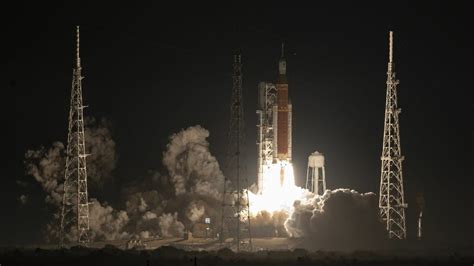NASA launched its moon rocket in the early morning hours of Nov. 16, bringing the United States one step closer to putting astronauts back on the moon.
The Artemis I moon rocket lifted off from Kennedy Space Center around 1:44 a.m., marking the start of NASA’s Artemis lunar exploration program.
“We rise together, back to the moon and beyond,” launch commentator Derrol Nail said during the NASA live stream as Artemis lifted off.
The Artemis I mission had been delayed four times prior to Wednesday’s successful launch due to fuel leaks and two tropical storms. After repairing a new leak discovered during fueling on Tuesday and replacing an ethernet switch, the mission was a go.
During its mission, the rocket will propel Orion, an empty crew capsule with three test dummies, into orbit around the moon. The capsule will travel 280,000 miles from Earth and 40,000 miles beyond the far side of the moon, according to NASA.
Orion is expected to reach the moon by Monday.
The test flight is expected to last about 25 days, with Orion returning to Earth on Dec. 11, NASA said. The capsule is expected to splash down in the Pacific Ocean off the coast of San Diego.
“You have earned your place in history,” launch director Charlie Blackwell-Thompson told her team following liftoff, according to the Associated Press. “You’re part of a first. Doesn’t come along very often. Once in a career, maybe. But we are all part of something incredibly special: the first launch of Artemis. The first step in returning our country to the moon and on to Mars.”
Data collected during this test flight will be used to launch a manned mission to the moon.
Astronauts last visited the moon in December 1972, with the closing of the Apollo mission. NASA plans to send astronauts around the moon in 2024 and have a crew land on the moon in 2025.

